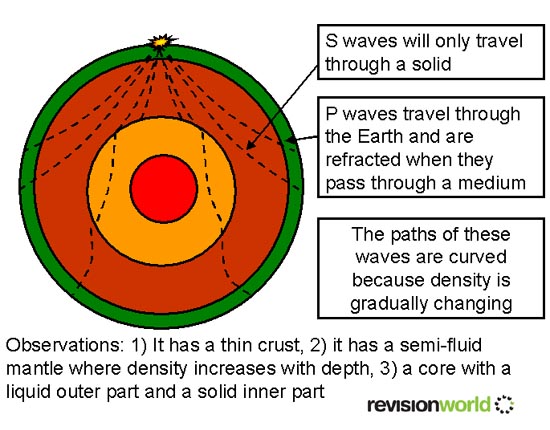

However, in longer distances, the seismic waves travel faster on the refraction path. When the trigger point is close to the receiving point, then the reflected waves are reached first. The seismic waves initiated near to the ground surface may be received by both reflection and refraction.

The study of geology suggests that the density of the rocks increases in depth near to the earth’s surface. The seismic waves are triggered underneath the land surface from one truck while the reflected and refracted waves are received by a receiver vehicle that has instruments called geophones. The seismic detectors are used to record the amplitude and timing of the waves to give the information on a seismogram, which also presents the ground vibrations that are studied for a possible earthquake. The falling weights or electric vibrators are also used to prevent extensive damage where caverns are present. The seismic guns are generally used to initiate or generate the seismic waves. The arrival or coming of refracted and reflected impulses by one or more seismic detectors.The time interval that has passed from the initiation of a seismic wave at a selected point.The procedure is not complicated and based on two elements which are The seismic survey is one of the most well-known methods used all over the world for the exploration of petroleum, natural gas, and minerals found in the subterranean structure of the earth. The survey is a non-invasive and low impact procedure of collecting information that is used to map the structure that lies underneath the ground surface and where minerals might be stored. There are ways to gather the geological information of locations, and one such effective method is through the seismic survey. The identification, mapping, and extraction of resources present on the earth’s surface are relatively easy on the land as compared to water surfaces. The earth we live in is mostly covered in water, and nearly 70% of the earth’s surface consists of big oceans, vast seas, and rivers, lakes, and streams. The different types of natural resources that are used for the fulfillment of energy needs include water, natural gas, oil, coal, and various mineral deposits that are used as raw materials in industries. The earth we live in is filled with numerous natural resources in large quantities, but the problem lies in correctly identifying the areas and then extract them.


 0 kommentar(er)
0 kommentar(er)
